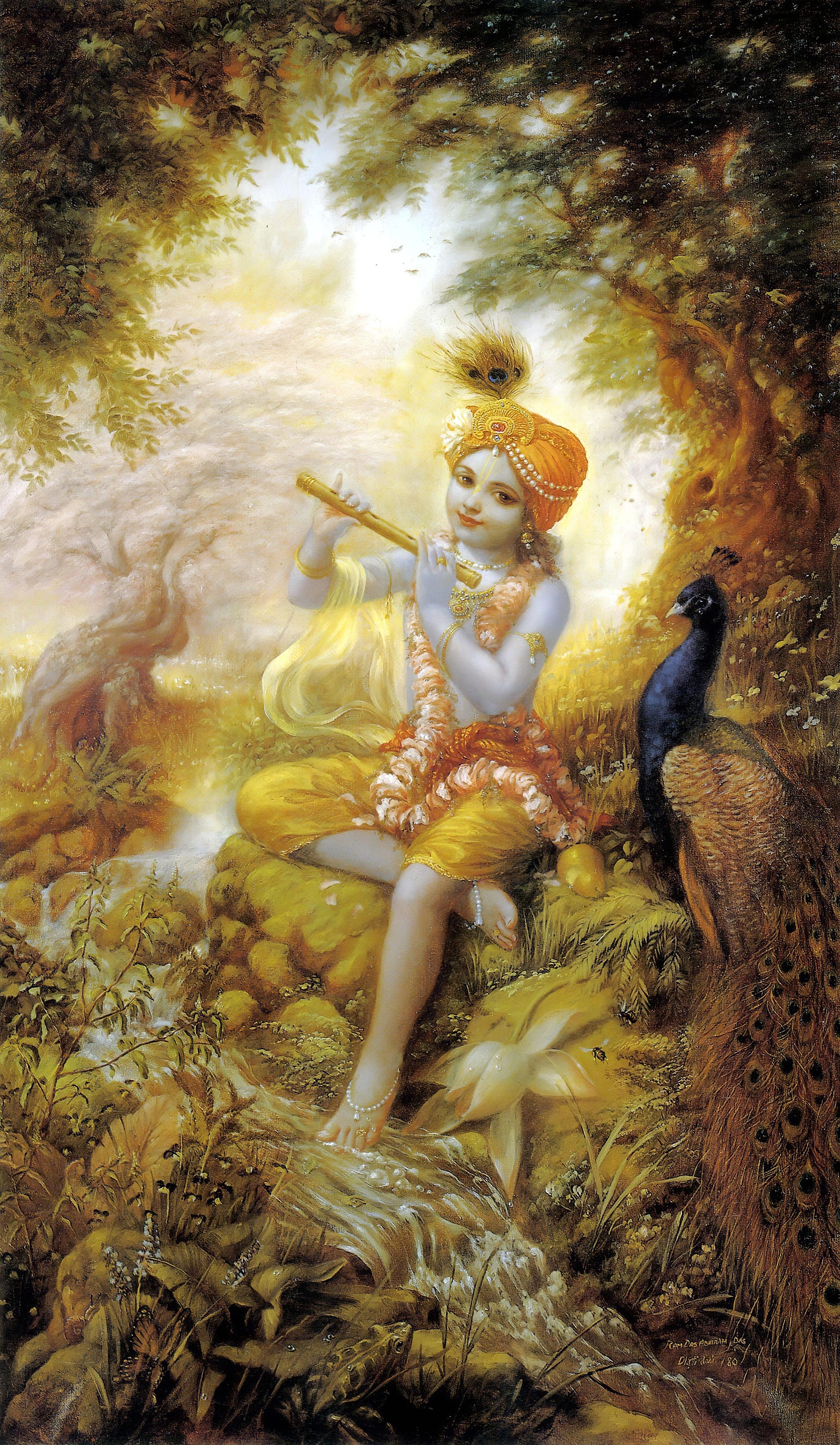(na) gati-sāmānyāt - The One and transcendental Brahman
Vyāsadeva says: If one says there are two types of Brahman, I say it is not so, because the scriptures uniformly describe only one transcendental Brahman.
« Vedānta-sūtra: The Govinda-bhāṣya of Baladeva Vidyābhūṣaṇa
Sūtra 1.1.10 - The One and transcendental Brahman
(na) gati-sāmānyāt
na: not; gati: goal, conception, destination; samanyat: on account of uniformity, sameness.
If it is suggested that there are two types of Brahman, I say it is not so, because the scriptures uniformly describe only one transcendental Brahman.
Commentary: One could protest against the points raised in the previous sūtra by again clinging to the idea of saguna Brahman and nirguna Brahman, insisting that saguna Brahman has a material form, constructed out of the material mode of goodness, and this is the Brahman who creates the universes and is described in the scriptures. The nirguna Brahman, on the other hand, is the pure transcendental, original Brahman, who is pure, perfect, and complete. According to this idea, the saguna Brahman is nothing more than a śakti (potency) of this original Brahman, which is transcendental and can’t be described in words.
To this argument, Vyāsadeva replies: gati-sāmānyāt. It is not so, because the scriptures describe only one Brahman. There is uniformity in the teachings of the Vedas, which describe the Lord as omniscient, endowed with all powers, perfect, pure, the supreme ātmā, the cause of the universe, the one worthy of worship, and the giver of liberation. The Vedas also define the Lord as possessing spiritual qualities and being transcendental to the material modes.
Normally, when we think about qualities, we think about material qualities like “strong”, “beautiful”, “intelligent”, and so on. All these qualities are material and find their opposites in defects such as “weak”, “ugly”, and “dumb”. However, the scriptures explain that Brahman has qualities, but at the same time, He is transcendental to the material nature.
When we are faced with such apparent contradictions, we tend to take one side of the question as the correct one and disregard the other. However, this 10th sūtra emphasizes that the way to understand this question is to harmonize the two sides of the argument. This is the general rule to understand the sastras. Different instructions must be taken together as part of a single explanation, and not treated separately. This is explained in detail by Śrīla Jīva Gosvāmī in his Ṣaṭ-sandarbha.
The fact that Brahman performs activities and has qualities, but at the same time is transcendental to material nature, indicates that such qualities are transcendental. This opens a whole new paradigm, indicating that apart from the material nature where we currently live, there is a spiritual nature that is transcendental to it. This transcendental nature includes forms, qualities, and relationships. In fact, in the Bhagavad-gītā, Kṛṣṇa explains that this material universe is like an inverted tree that is a reflection of the original tree on the spiritual side. Brahman is thus not just some impersonal concept, but a whole new world full of variety.
As mentioned in the Viṣṇu Purāṇa:
samasta-kalyāṇa-guṇātmako ‘sau
“The Supreme Lord is full of unlimited, complete, and auspicious attributes.”
When the scriptures mention that the Lord can’t be described, this just means his qualities are unlimited and thus He can’t be fully described. The Vedas describe thus only one type of Brahman, the Supreme, transcendental Brahman, the Supreme Personality of Godhead. As mentioned in the Bhagavad-gītā:
mattah parataram nanyat, kincid asti dhananjaya
mayi sarvam idam protam, sutre mani-gana iva
“O conqueror of wealth, there is no truth superior to Me. Everything rests upon Me, as pearls are strung on a thread.”
« Vedānta-sūtra: The Govinda-bhāṣya of Baladeva Vidyābhūṣaṇa


